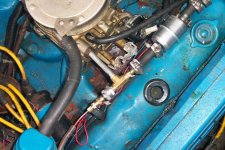glorious_one
New member
After about a week of inactivity, my 1987 port 454 Crusader engine will not start due to lack of fuel in carb. It seems that the fuel is siphoning back into fuel tank. It will start after a few sips of gasoline down the carb's throat and run fine even a day or so later. Rochester Carb is recently rebuilt. Lazy fuel pump?


